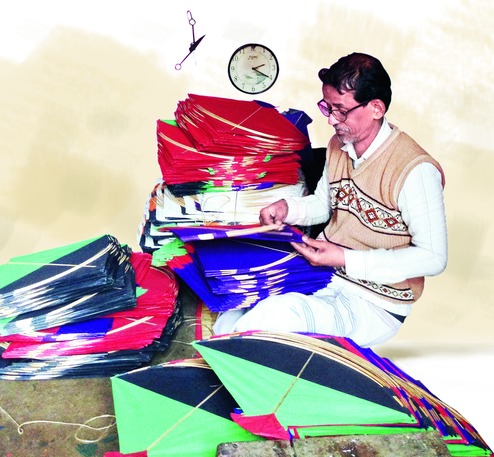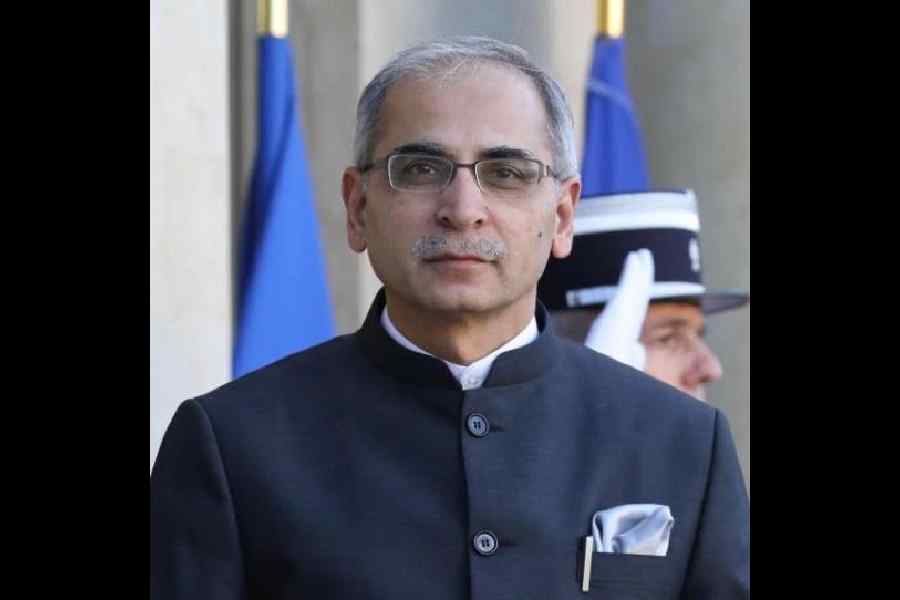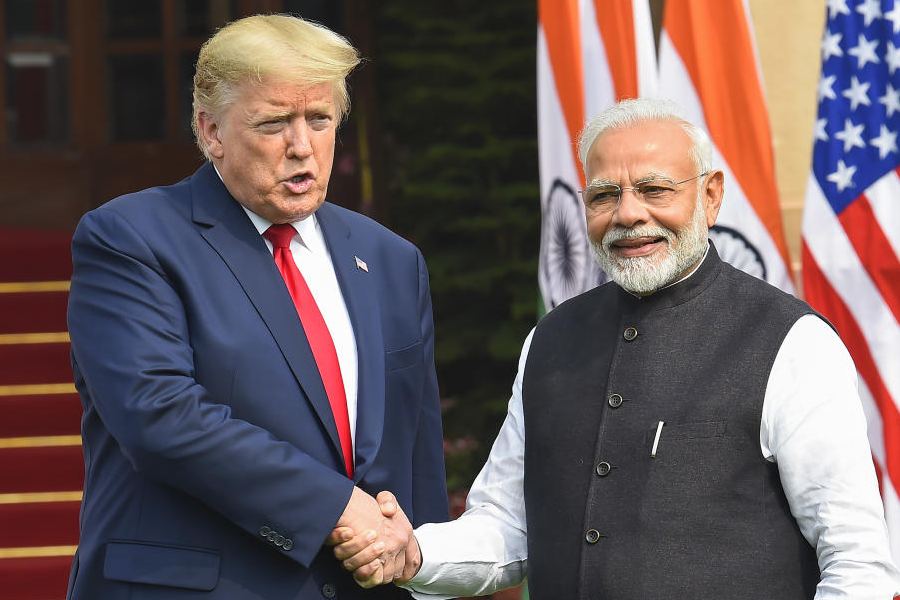
and paper kites, though connoisseurs prefer the latter. Picture Credit: Manasi Shah
Between the "No Smoking" sign above and the peeling wall below, there is a poster of a small kite shop in Metiabruz in the southwestern part of Calcutta. It shows a young Wajid Ali Shah in all his nawabi splendour. He is wearing his signature brocade angarakha, risquely designed to reveal some skin. But wait. Look again. Someone has photoshopped the royal bosom, and all you can see is a heart-shaped kite and emblazoned on it, the name of the kite shop.
Kites, as history is witness, were actually very close to the Nawab's heart. Metiabruz was his home away from home. Not surprisingly, the craft flourished here under his patronage. In the book Lucknow: The Last Phase of an Oriental Culture, writer Abdul Halim Sharar names some kite-makers from the Nawab's time - Mir Vilayat Ali, Ilahi Baksh Tundey... A 19th century log titled Oudh Pension Papers records the existence of a Mir Haider Ali who is described as a patangbaz or kite flyer and the monthly pay, as well as pension scribbled against his name, is a princely eight rupees.
Today, Metiabruz is a major kite-making hub, not just for Bengal but for all of India.
It is Makar Sankranti today; the countdown to the winter solstice has begun. It is also the beginning of kite occasions - R-Day, Holi, Independence Day, Vishwakarma Puja. On Uttarayan, the Gujarati equivalent, the chilled skies of Ahmedabad, Vadodara, Surat, Jamnagar are covered with a blanket of kites. But for a place that boasts of 2,000 small and big kite retailers, mostly factories and wholesalers, Metiabruz seems oddly quiet, bereft of zing.

Demonetisation? GST? Another story with an unhappy ending? One is too scared to ask. But it is none of these. According to Sadik Abidi, around this time a lot of kite-makers shift base for a couple of months to Gujarat - an international kite festival is also held every year around this time, a kite market thrives there. Bengal's enthusiasm for kites comes nowhere close. " Manjha sutne ladke log jaate hain Gujarat. Bahot saare young ladke. Do-teen mahina, khana, pina rehna sab wahaan... Many young boys go to Gujarat to prepare the manjha [the treated abrasive thread used to fly the kite] during this time. They stay there for two to three months."
Like a lot of small, unorganised businesses, kite-making, too, is not a profitable trade. For that and for a host of other reasons, younger generations are not interested. In recent years, a lot of women of Metiabruz have filled that gap. The business, however, continues; powered as it were by demands from other corners of the country - Varanasi, Mumbai, Allahabad...

Sadik Abidi is making plastic kites. They are cheaper to manufacture as well as to sell, he explains, as opposed to the paper ones. Most of these are sent to Chennai. Sadik has been to Gujarat too. He says, "Makar Sankranti mein yahaan zyada kuch nahi hota... Aap Ahmedabad jao, raaste mein chalne ki jagah nahi hoti. Sar par le ke chalte hai log patang ko... There is nothing much that happens in Calcutta during Makar Sankranti. But it is not the same in Ahmedabad. You can barely walk, it is so crowded."
The retailers here sell kites, latais or spools and manjha in bulk. "If we get customers, it is fine, but most of the orders are from mahajans," says Sadik.
Ten steps from his den is Taiyeb Hussain's Diamond Kites. He deals in the real stuff, no plastic shastic here. "Children demand plastic kites. The ones who know how to fly kites will never settle for anything other than paper ones. Plastic ones don't last much in the air," he says. The smallest kite measures 10x10 inches, while the largest is 24x24 inches.
Taiyeb's phone rings, he spits his gutka as he takes the call. Someone is bargaining at the other end. He says, "Now there is GST to consider. How will I send them [kites]? Posayega nahi... Cannot afford."
Unlike Sadik and Taiyeb, Mohammed Raja is no shop-owner but a kaarigar. As he cuts kites out of big sheets of green and yellow paper, he chitchats. "The sale of manjha from China has been banned [in 2016, by the National Green Tribunal]. There were too many accidents. A lot of people died. But those manjhas wouldn't break at all and were favoured by kite enthusiasts. The cotton ones break easily."
As we walk through lane after dingy lane, we pass countless kite shops. Some of them have samples on display. Superhero ones - Superman, Batman, Wonder Woman. Filmy ones - Bahubali seems the flavour of the season. Personalities - Modi, Hrithik, Ajay Devgn. Cartoon ones - Chhota Bheem, Doraemon. Preachy ones - Beti Bachao. Haughty, long-tailed ones. They are of different shapes - butterfly, fighter jet - and colours. As the winter breeze shoots through them, they shiver and roll over and we cannot help but wonder, somewhere, a maverick Nawab must be very tickled.











